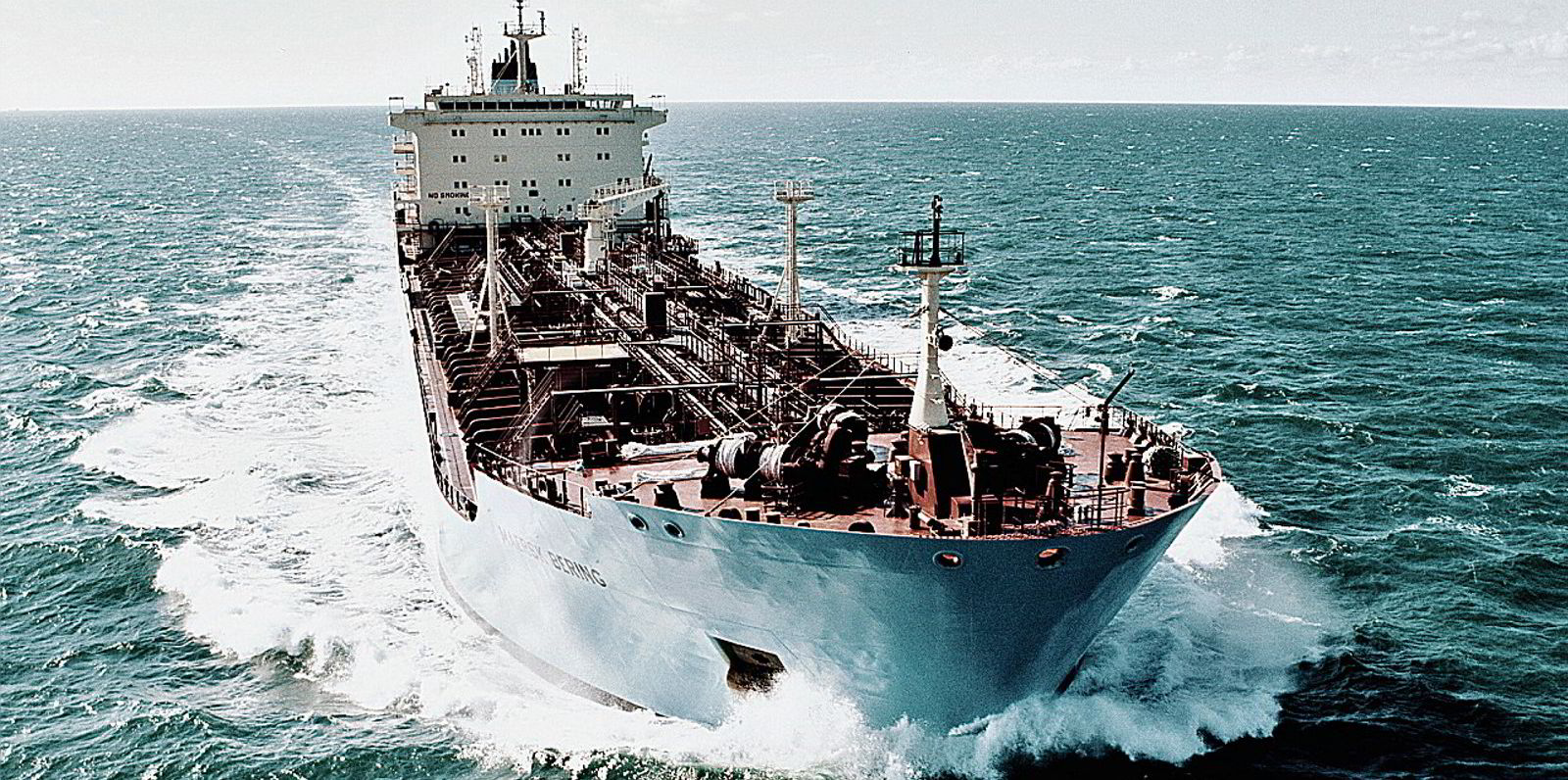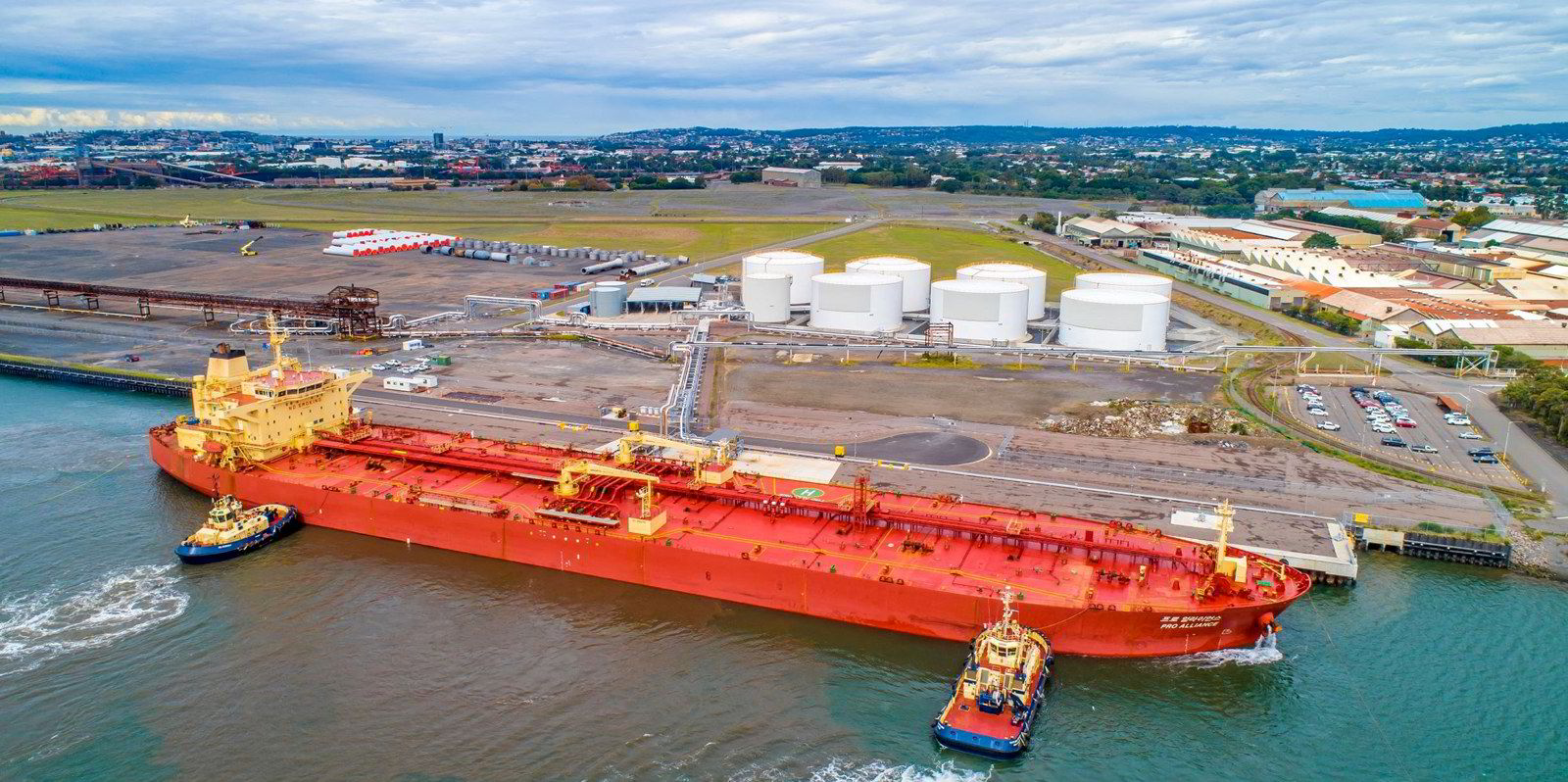Last year’s spectacular gains for product tankers were achieved without a boost from the reshuffling of oil trade routes that will drive revenues n 2023, Maersk Tankers chief commercial officer Eva Birgitte Bisgaard tells TradeWinds.
The Danish pool operator expects tonne-miles to increase by 9% after the European Union bans imports of Russian refined oil products from Sunday. Replacement supplies will come from further afield.
Product tanker rates hit near 20-year highs in 2022, with gains widely attributed to a surge in tonne-miles as Europe looked to non-Russian suppliers of diesel and other refined oil products.
But analysis of trade flows by Maersk Tankers found that tonne-mileage last year played only a minor role in boosting revenues. The figures showed that Europe struggled to replace Russian diesel, and major refiners outside of Europe took time to build up operations, limiting the need for long-haul voyages.
The research highlighted an increase in time that oil spent at sea, but “that still couldn’t explain the extreme levels of freight rates that we got”, Bisgaard said.
“That was when we started seeing stories about increased tonne-miles being the main driver of higher rates,” she added.
“We just simply did not see it. We could not see more tonne-miles. We still haven’t.”
Researchers dug deeper into the data to work out how they can replicate the success in an increasingly complex environment of sanctions and the demands of decarbonisation.
The findings suggest that Russia remains key to the gains in 2022. Volatile and high prices opened up opportunities for arbitrage — the buying and selling of commodities to exploit price differences between markets.
Meanwhile, the emerging market hauling sanctioned Russian crude saw some tankers shift to exploit premium rates.
That in turn forced rates up in the “mainstream” market to ensure tonnage was available for arbitrage trades, said Bisgaard, who joined Maersk Tankers from Danish telecom company TDC in 2020.
“When we saw the tonne-miles, we said, ‘How can this be?’ But then it was just so clear from the numbers because … there wasn’t really an alternative source at that point in time.”
Over the past two decades, product tanker rates only went higher in April 2020 during the short-lived Russia-Saudi Arabia price war, according to Baltic Exchange data. Rates have fallen this year, although analysts at Clarksons say underlying conditions still point to a strong year.

The optimism is based on the changes on 5 February when the EU bans seaborne imports of Russian oil products. The 27-nation bloc will be forced to look elsewhere for the roughly 700,000 barrels per day of diesel that it continued to source from Russia throughout December. Increased global demand for oil products will also play a role in boosting tonne-mileage, said Bisgaard.
The EU introduced a similar ban on crude on 5 December, with cargoes previously taken by Europe heading instead to refiners in India and China.
Some of that Russian base product will return to Europe after 5 February as refined products, free from the restrictions of the Western sanctions regimes.
The winner will be the product tanker market with a lift in tonne-miles. A historically low orderbook and the potential for slow steaming to limit emissions and comply with new decarbonisation regulations will keep supply low. Supply is likely to increase by only 2%, Bisgaard predicts.
Volatile markets
“We can see that we will have a market which will range from volatile to extremely volatile,” she said.
“The product we’re going to be seeing is coming from Middle East and from Asia. We know India has opened up quite a lot of refinery capacity, and also the US, which is having to decide between diesel and gasoline.”
Maersk Tankers will closely follow the impact of the ban and price cap on seaborne Russian oil but is not engaged in the Russian trade, said Bisgaard.
She said a range of new complexities will come with the price cap, which is expected to be limited to two prices: one for products trading at a premium to crude; and one for oils trading below crude.
European shipowners and charterers and insurers will be able to operate and cover tankers only if the oil is sold below those prices.
The longer-haul voyages needed to replace the Russian barrels will lead to an “even tighter market”, according to Bisgaard.
That means “everything that is going to happen within the next year, geopolitical uncertainty, shocks … is going to hit the market immensely”, she said.
“And when that happens, we will have rates with high spikes again, which is why we also believe that it’s a good thing to stay in play on the spot [market] right now because we know the market is tight.”





